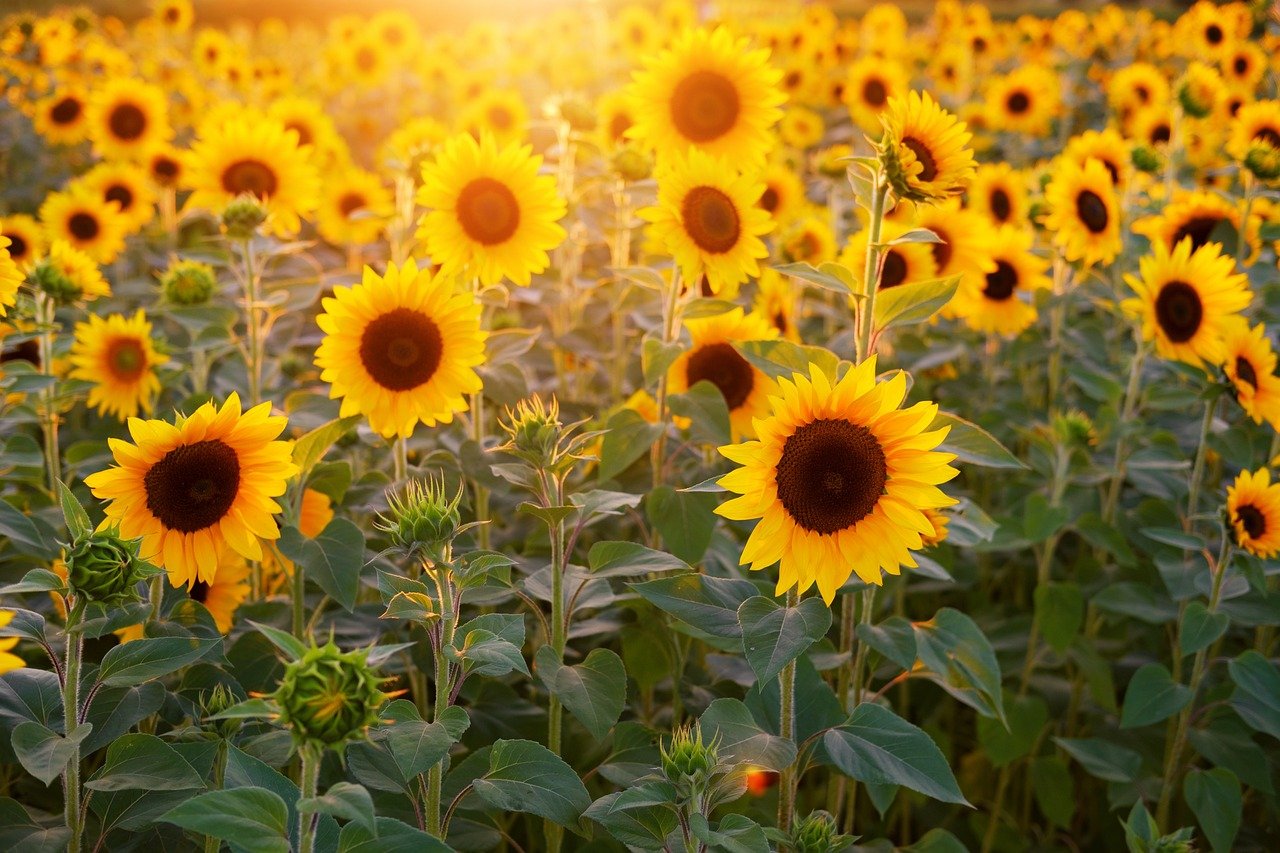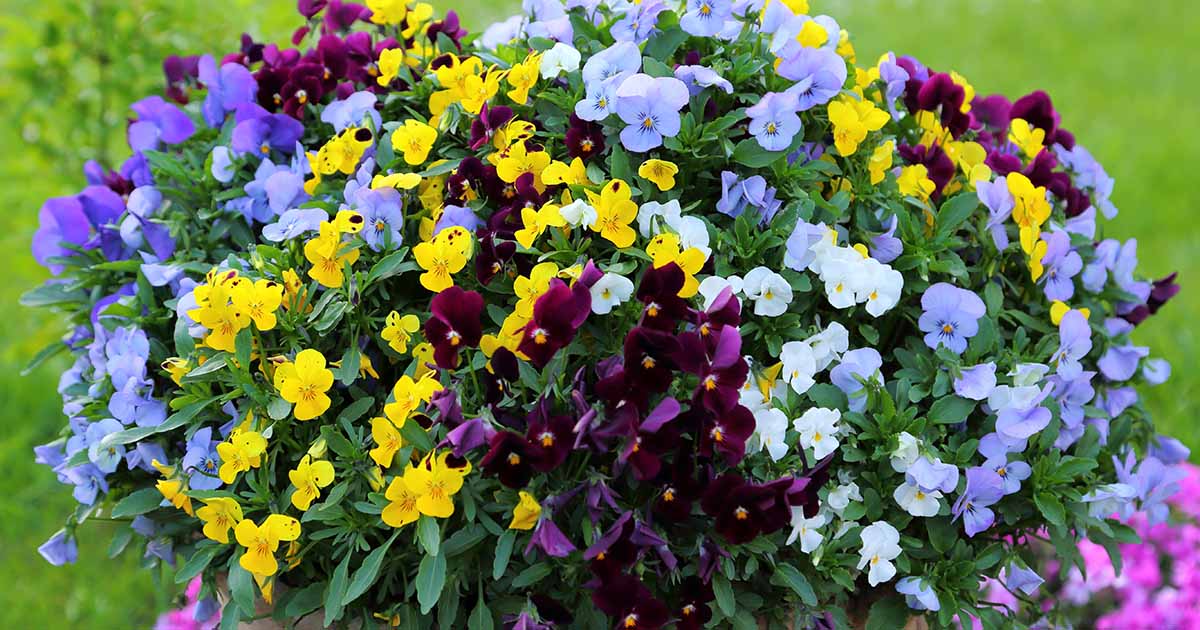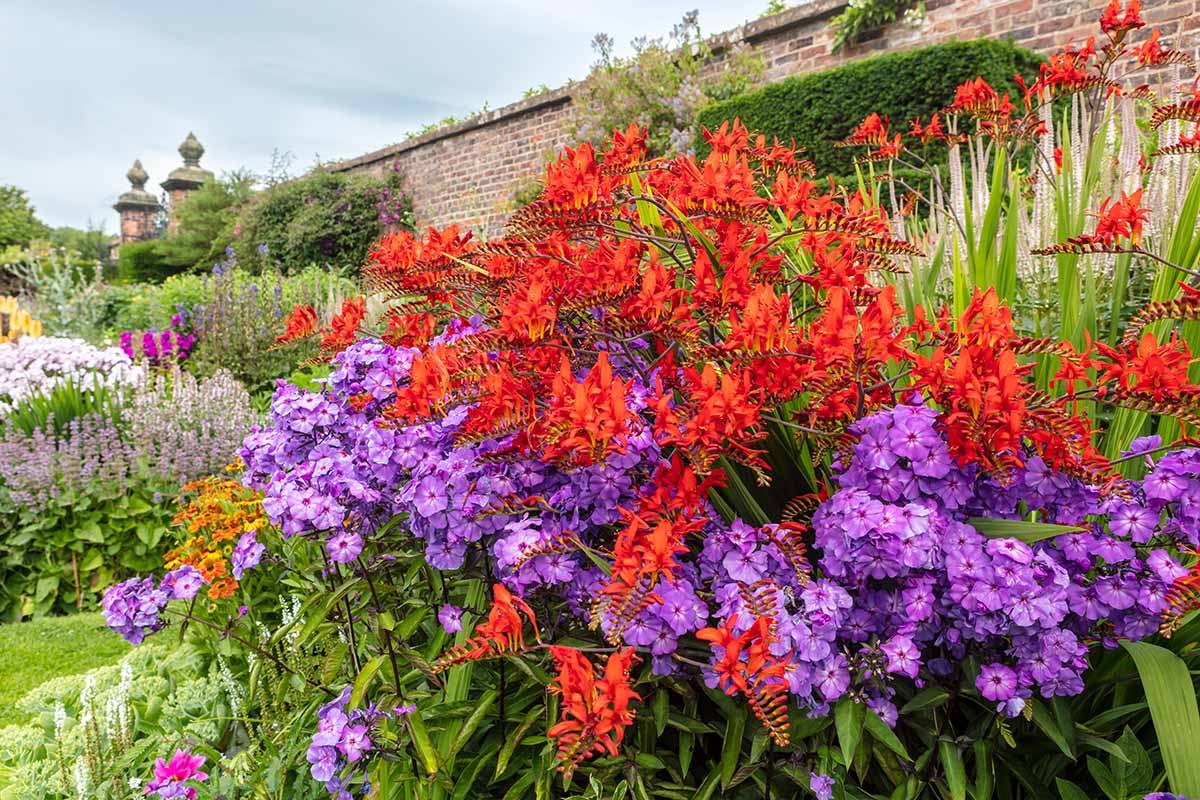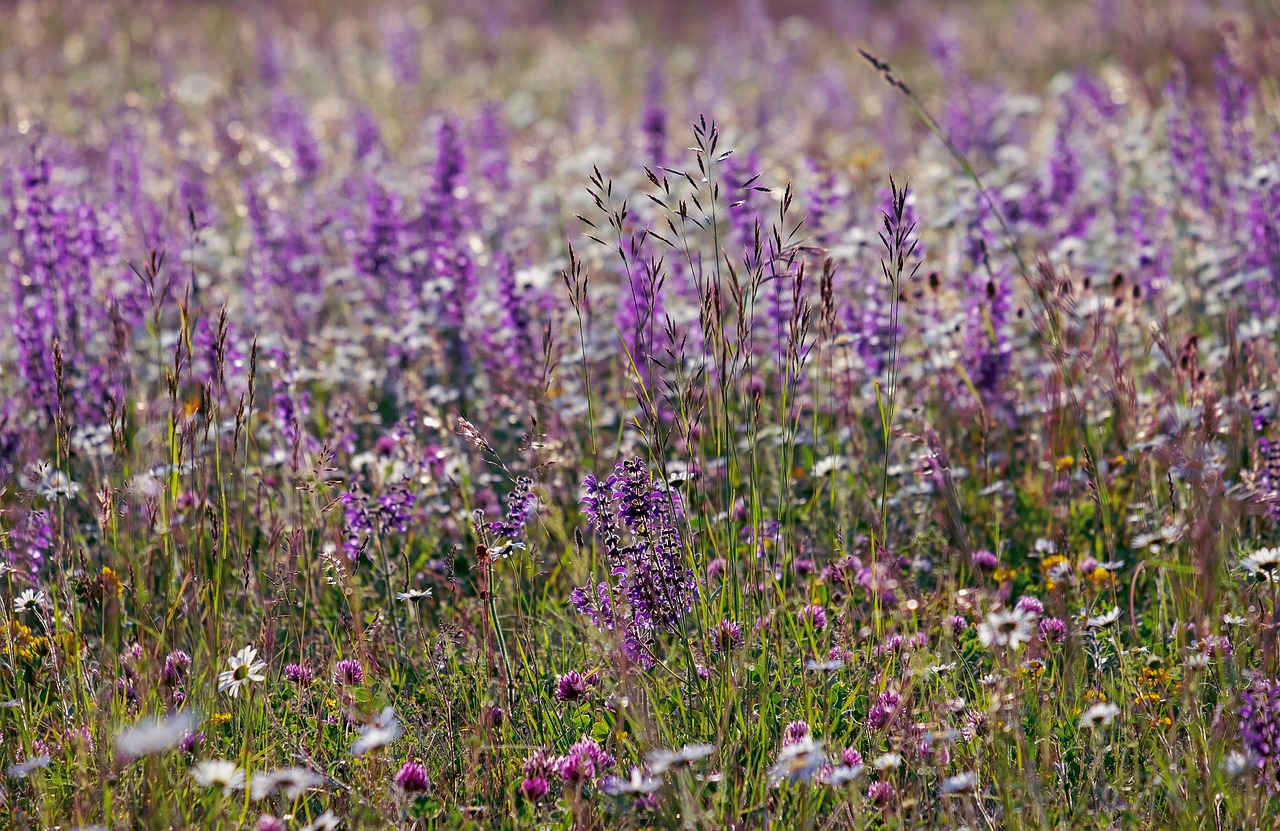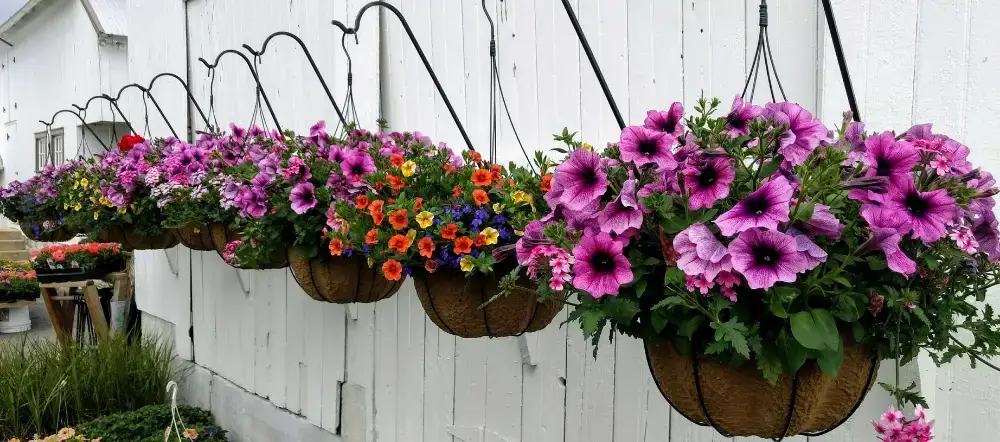25 Must-See Early Spring Flowering Plants For Your Gardens
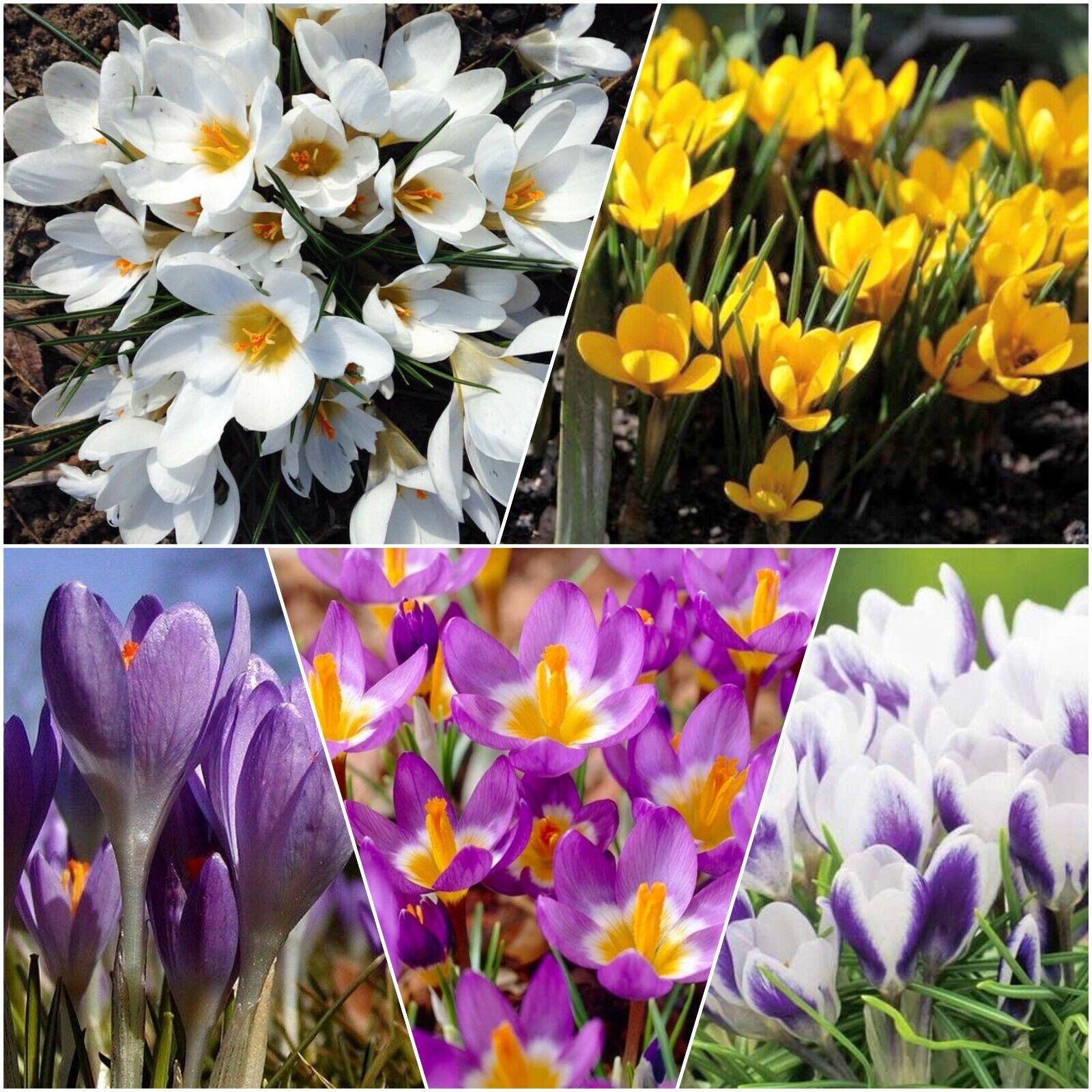
Table of Contents
Have you noticed the dazzling hues and enticing aromas of the flowers in bloom all around us? Yes, you guessed it right! It’s that time of the year again when spring’s splendour replaces winter’s frost. And the appearance of these early spring flowering plants is one of the most admirable parts of this year. From daffodils to tulips, these blooms are a welcoming sight after a long winter.
You can plant some tulips to add some pop of colour to your garden or can even go for hellebores if you want a more subtle look. We have curated a list of the 25 most admirable spring flowering plants one can have. These will surely inspire any gardener or nature lover to add vibrant hues to their backyard.
We bet you will surely fall in love with them and find something to match your liking!
1. Primrose

Primrose is a beautiful and one of the most loved spring flowering plants. What makes it adorable is its pale yellow blooms and fresh green crinkled leaves. Over the years, these will grow into clumps that can be divided and replanted again n the garden. They thrive in most conditions and are, therefore, ideal for lining a path or filing a container to enhance the display.
2. The White Forsythia
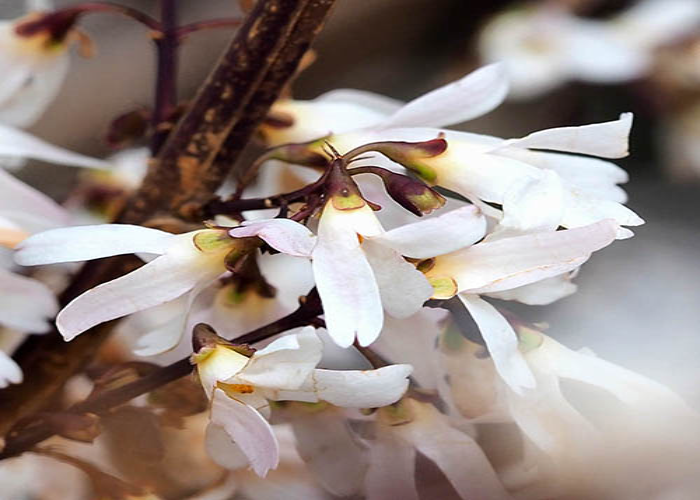
White forsythia is a much more muted spring flowering plant than its lively yellow sibling. During late winter and early spring, you can see an abundance of fragrant white star-shaped flowers blooming on the barren branches. Since it has a fairly slack scrambling nature, don’t forget to prune them after flowering. Though it grows best in full sun, it is shade tolerant, too and thrives well if the soil is not very dry.
3. Hellebore
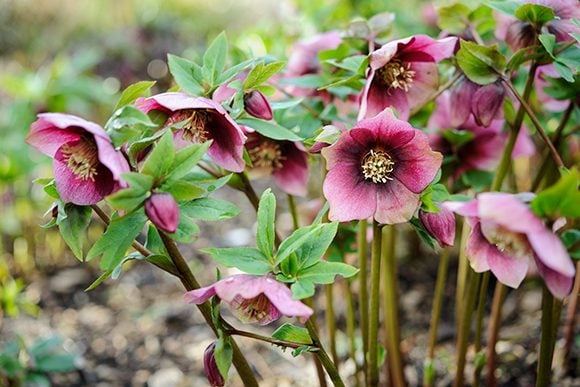
Hellebores are one of the most popular and easiest to grow spring flowers. These blooms come in a variety of shades ranging from white and ivory to pink and purple. Hence, there is a flower to complement any garden or outdoor space. They begin blooming in February and March and thrive in moist, well-drained soil with some shade. They frequently self-seed, giving rise to new mobile plants and dislike being moved around.
4. Lily Of The Valley
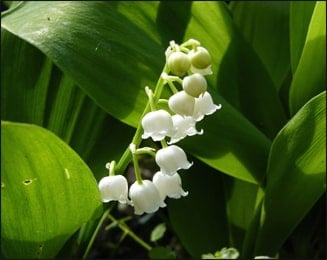
Lily of the Valley is a forest spring flowering plant which works well as a ground cover. They bloom in March or April, providing the gardeners with a springtime treat with their tiny white flowers that resemble bells. They can be grown in any kind of soil and flourishes in dappled shade, whether beneath a tree’s canopy or in a sunny garden nook. When the weather is dry and moderate, you can plant its rooted crowns outside; both spring and early autumn are good times to do this.
5. Crocuses
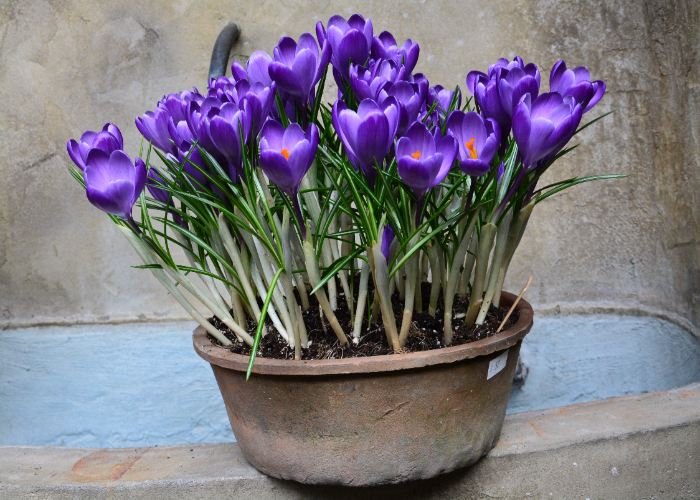
Some of the happiest spring flowers are crocuses, offering early queens and an abundance of pollen. Although you might find yellow and white variants, purple crocus blossoms are the most common. The optimum time to plant them is in autumn, and they thrive in full sun and moist but well-drained soil. They grow from corms that resemble bulbs. You can plant the crocus in pots or openings in front of borders, or you can even let them grow naturally in your grass.
6. Daffodils
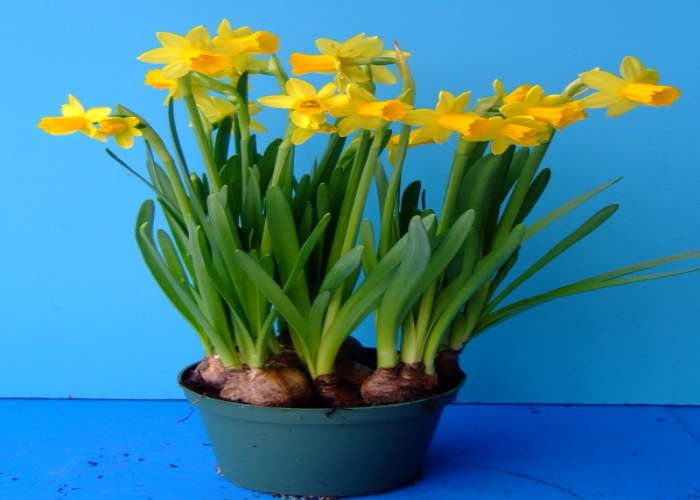
Without daffodils, would spring be spring? Not really! These bright yellow blooms not only add a pop of colour to your backyard but also compliments well with other blooms in your garden. There is an array of daffodils to cultivate, ranging from white and salmon pink to tall and dwarf kind too. If you truly adore daffodils, you could plant a variety of early and late flowering varieties so that they would bloom in your garden from February to May.
7. Tulips
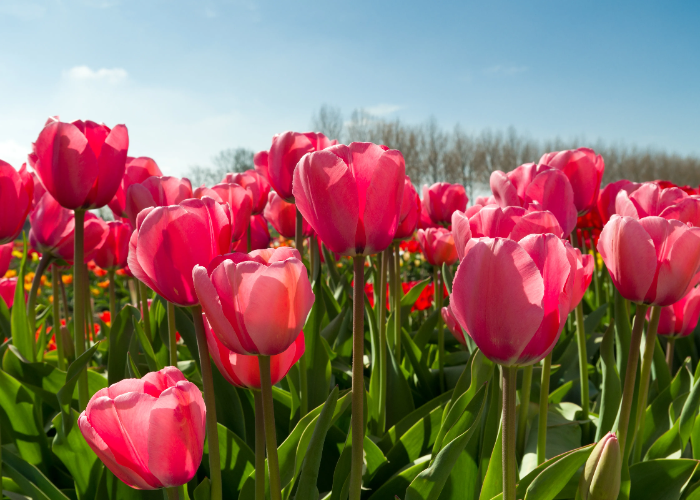
With a variety of colours, shapes and sizes, tulips are amongst the most favoured spring flowers. To create a joyful arrangement, pick vibrant colours. To add some dramatic effect to your garden, add white and maroon tulips together. If you wish for different aesthetics, you can even pick tulips with peony and frill flowers. They are an excellent addition to spring [pots and borders even though pollinators don’t like them. Lastly, remember, they should be planted in full sun, wet but well-drained soil.
8. Forget Me Not
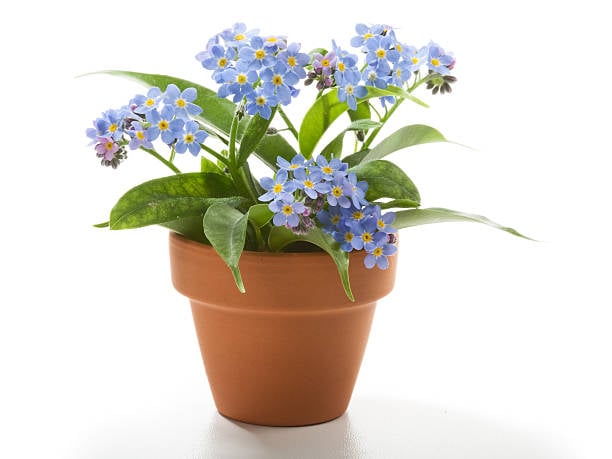
The pleasant blossoms of blue forget-me-not are low-growing spring flowers. They grow beautifully towards the front of the border and look stunning when mixed with tulips and daffodils for a colourful spring display. Although this beauty rapidly self-seed, it is advisable to remove them and replace them with something else after they have finished blooming because they begin to appear ragged. Cultivate them on soil that is moist and well-drained in some shade.
9. Iris
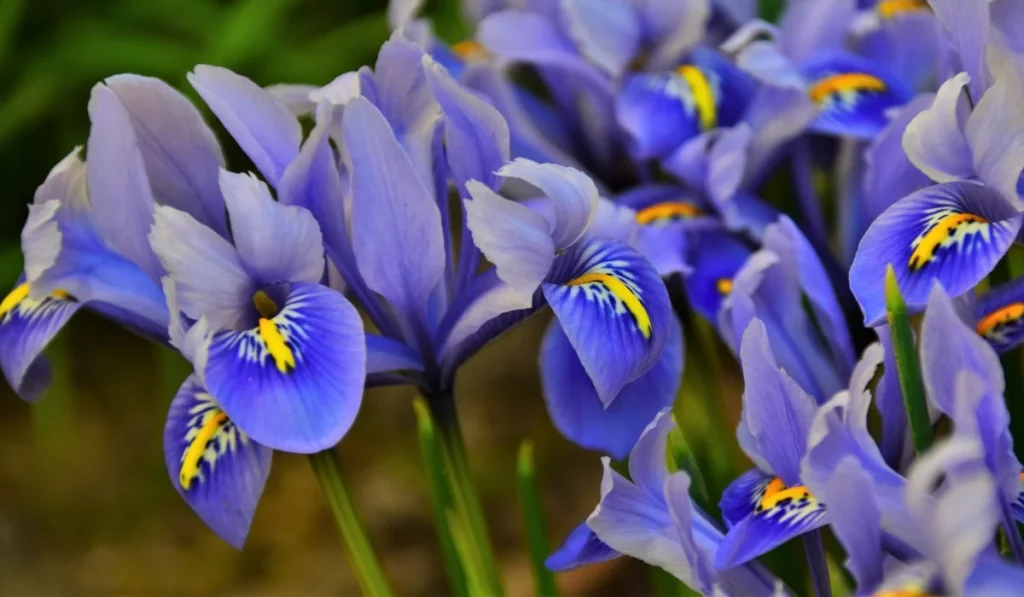
Iris that bloom early gives small and fragrant flowers that are purple with golden patterns. They flourish best when grown in free-draining soil, in full sun or moderate shade, and they look great at the front of a border or in terracotta pots. These are widely accessible and can be sown at a depth twice as great as their own in the autumn to bloom in the spring. Over time these bulbs can even multiply, which can cause crowding and subpar blooms.
10. Winter Pansies
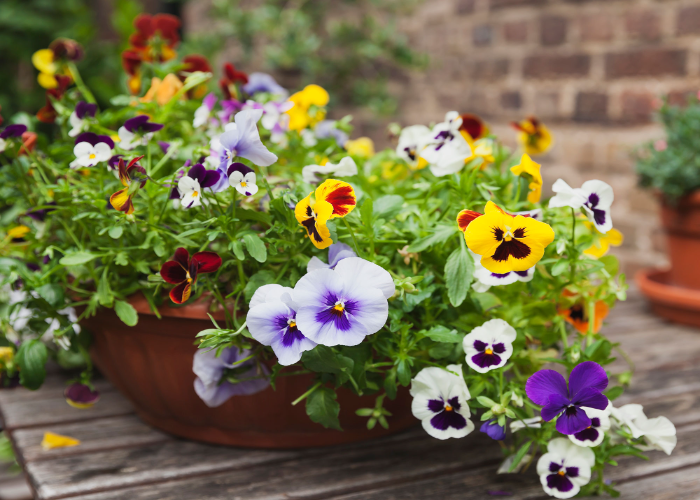
Winter pansies are extremely tough plants with a hardiness rating of H7, able to withstand frost, snow and pretty much anything else a typical British winter may throw at them. When they are planted in autumn, preferably September, they should have enough time to germinate before the harsh winter, during which they should flower until April. These spring flowers can bloom in the sunniest, coldest winter months. You can count on these beauties to add to your garden.
11. Hyacinth
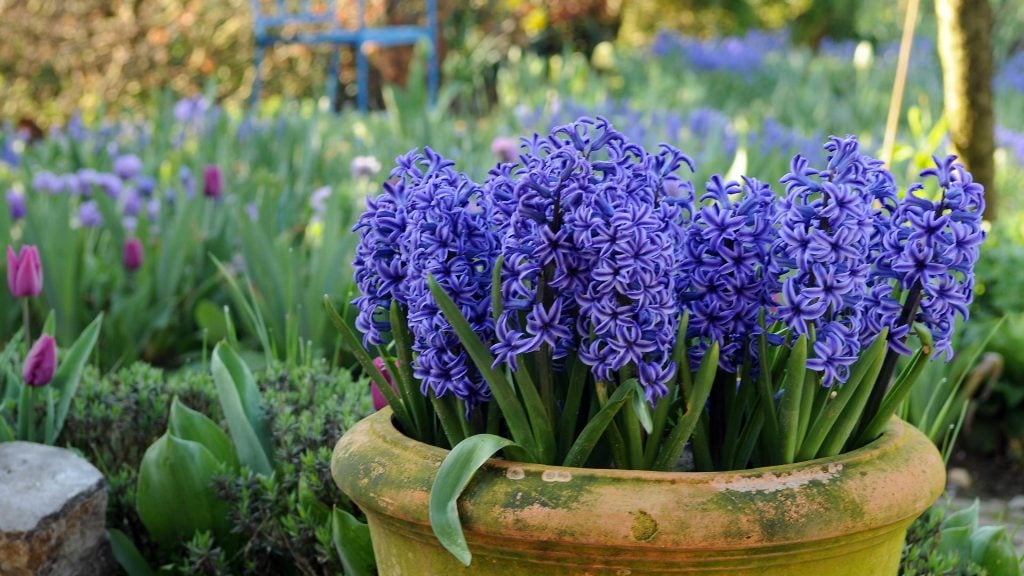
Hyacinths are beautiful spring flowers that have lost their popularity that has recently lost their popularity because of their dated appearance. They, however, look great in pot arrangements and are very fragrant, providing an early-year burst of spring colours and aroma. These can be availed in colour shades of purple, white and pink. Hyacinths should be grown in full sun, moist but well-drained soil. The bulbs should be planted in the autumn at a depth of about 10 cm, and yes, they should be well watered.
12. Snowdrop
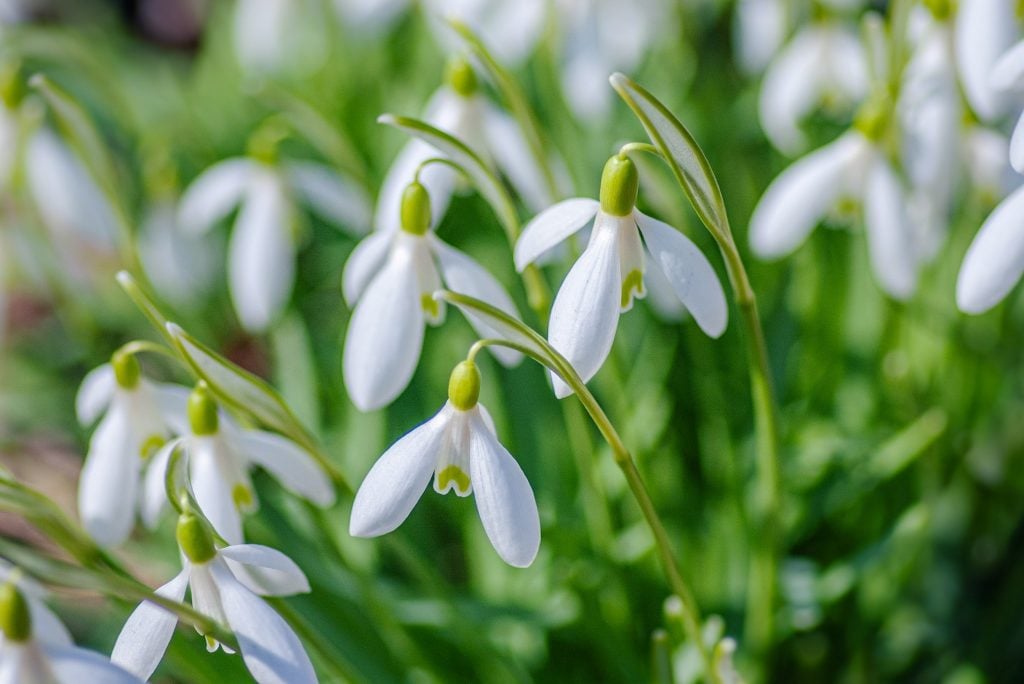
Snowdrops are an eye-soothing addition to any garden as they mark the beginning of spring. They look beautiful when grown in clumps or drifts to form a white carpet, frequently blooming in February and March. They come in a huge variety, some of which are priced exorbitantly. But don’t be discouraged by this. These spring flowers can thrive in moist, well-drained soil in partial or dappled shade. Although these bulbs can be planted in autumn, they are less likely to thrive.
13. Lungwort
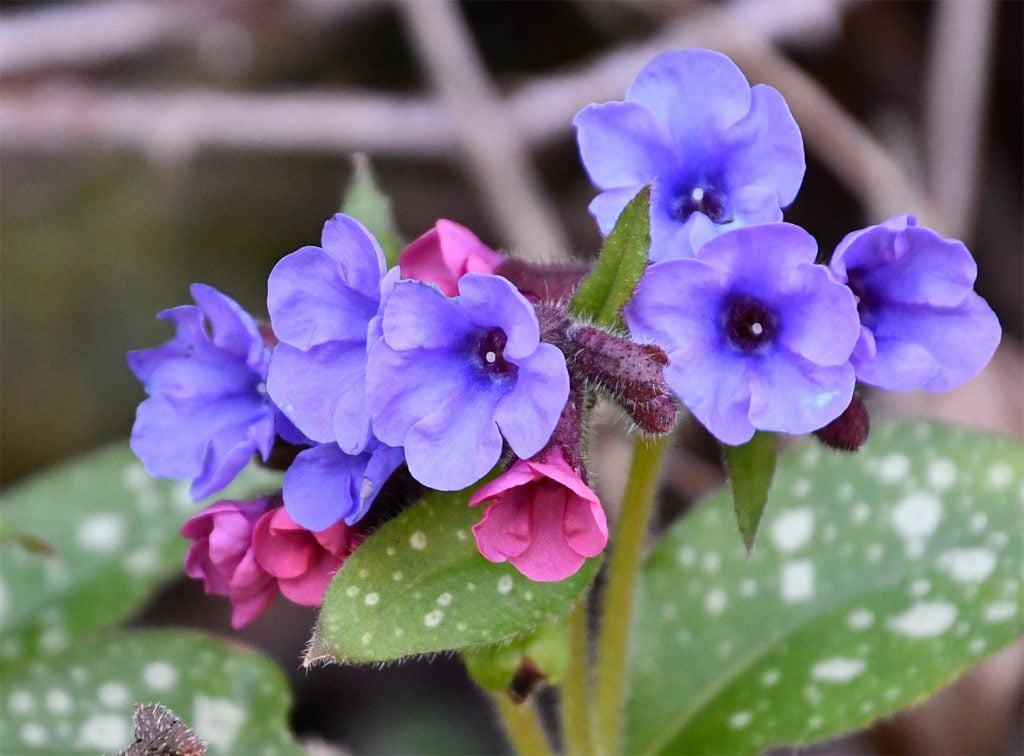
Beautiful perennial lungwort is a herbaceous plant that can withstand a greater amount of shade than other spring flowers. Its name comes from the belief that the patterns on its leaves reassembled damaged lungs. Its flowers might be pink or purple. One of the first bees to come out of hibernation in the spring, the hairy-footed bee loves lungwort. To create a natural spring look, combine lungwort with primroses and forget-me-nots.
14. Winter Aconites
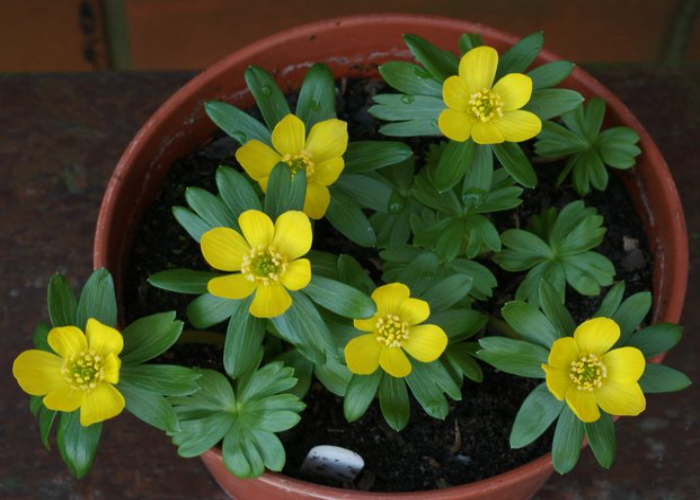
The buttercup family plant, also known as winter aconite, is indigenous to woodland areas. These early blooms have vivid yellow flowers. These spring flowers typically open in late winter, blooming much sooner than crocuses. Once established, this flowering plant ought to reappear each year, and you will also notice that it spreads quickly. This plant needs regular exposure to sunlight to flower. Hence its soil needs to be kept moist. Plant them in the green after flowering, much like you would do with snowdrops.
15. Bleeding Heart
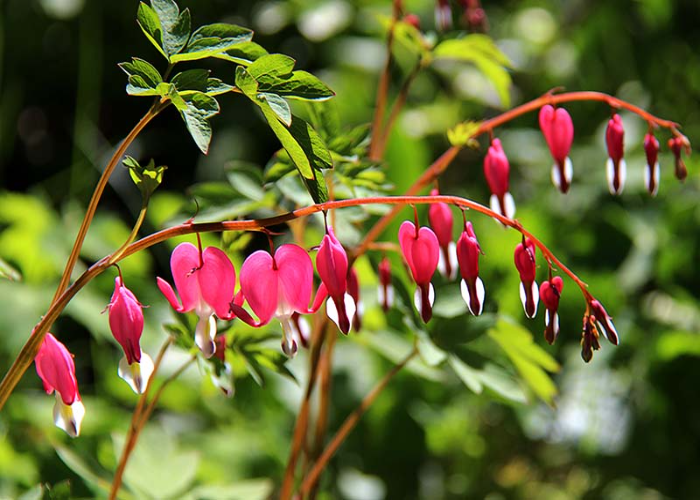
A bleeding heart is a very popular spring flower. They have heart-shaped flowers that hang from their arching stems in pink, crimson or white. They are a fantastic early spring plant to give colour to the yard, with flowers blooming from March to June. They thrive in the majority of fertile soils, except for acidic ones and need a protected area in partial shade.
16. Foxgloves
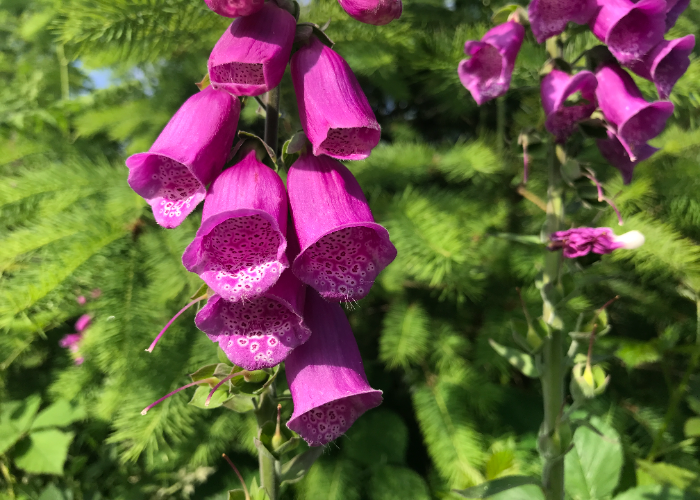
Foxgloves fill the void between perennials with spring and summer blooms by flowering from late spring to summer. These spring flowers often produce pinkish-purple tubular blooms with lovely spots inside, although there are orange and white flowering variants. The majority of these plants are biennial, which means that they bloom and produce seeds in the second year; however, perpetually, they will be more widely accessible. You can grow foxgloves in the sun and shade in moist but well-drained soil.
17. Starflowers
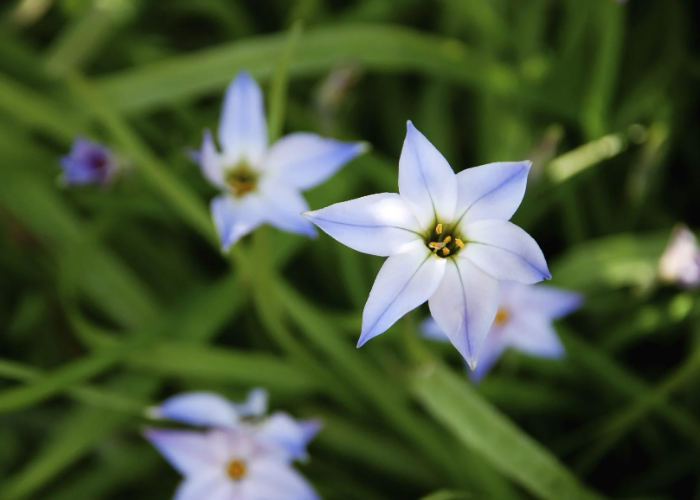
Flowering bulbs known as starflowers or Iphenions are indigenous to South America. Here in the UK, they typically start blooming in March and have scrumptious-smelling blossoms that are typically blue or white. For best results, plant in full sun with loam-based compost. This flower features a golden centre and five to nine tiny star-shaped petals in shades of either pink, white or both. You can add charm to any forest garden with this lovely and delicate spring flower.
18. Heather
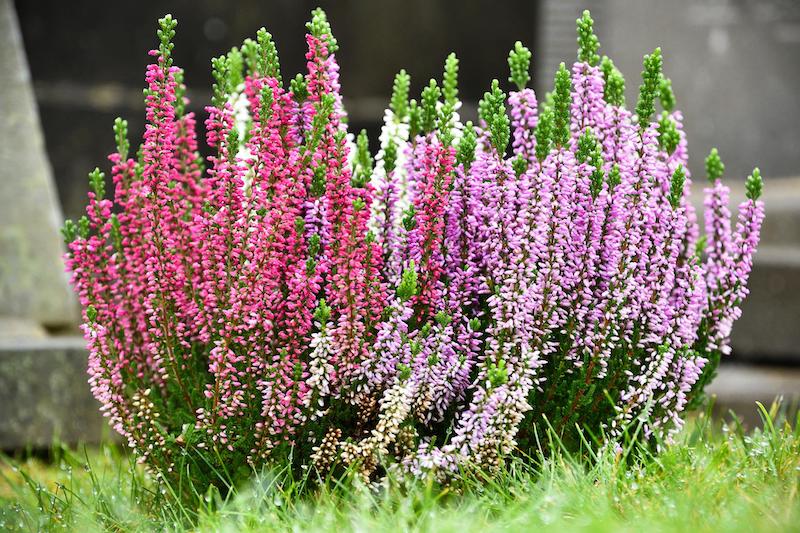
Heathers bloom in winter and spring with few other plants. They serve as a bumblebee magnet and a vital source of pollen and nectar in early spring days. These resilient heathers can thrive in neutral to alkaline soil, unlike the summer flowering heathers. You can plant them in containers alongside other spring flower arrangements or in front of a sunny border.
19. Wallflowers
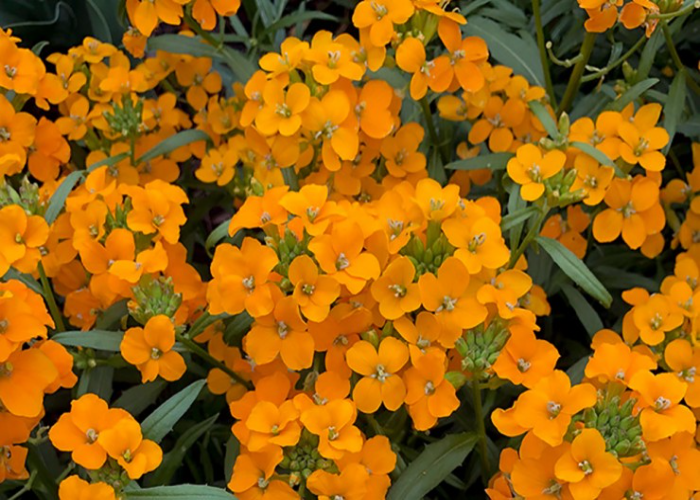
In springtime bedding arrangements, wallflowers are popular. Due to their biennial nature, most of them should be sown in late spring to bloom in the following spring. You can even purchase bare root wall flowers to plant in the autumn. These spring flowers are available in shades of dark red and yellow. You have to plant them in soil that is both moist and well-drained in either full or moderate shade.
20. Snake’s Head Fritillary
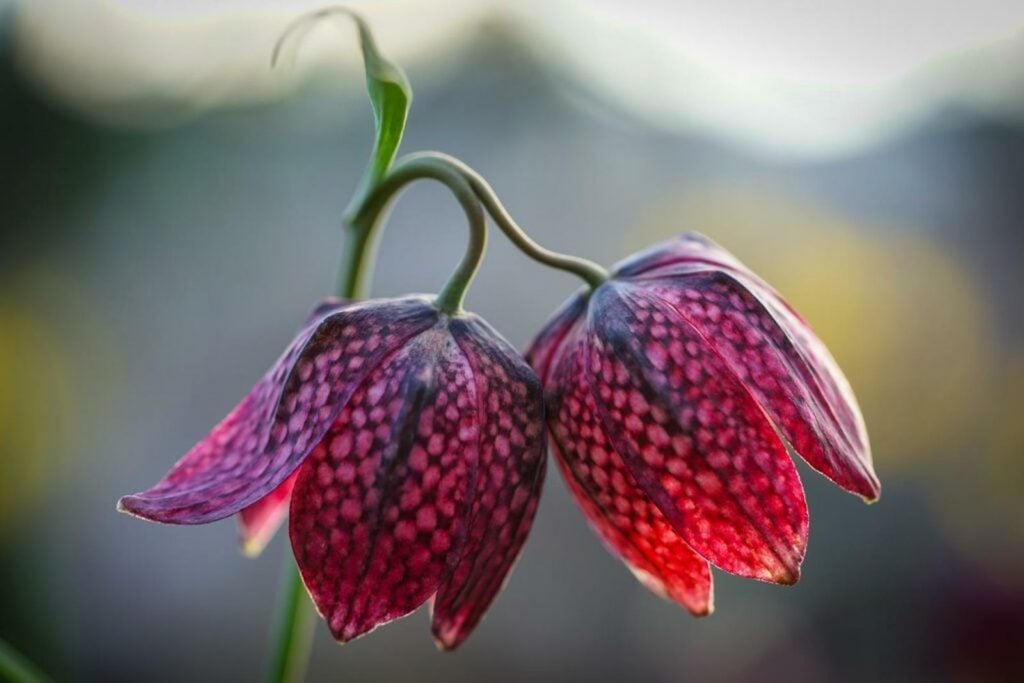
Fritillaries will give your garden a rare and exotic touch with fabulous bell-shaped flowers. These plants are relatively easy to care for and will thrive in most garden soils. What makes them stand out is their chessboard-patterned blooms of deep purple, white or pink shades. They have a graceful nodding habit that adds to the overall charm of the plant. These attractive plants mostly grow in the Mediterranean climate, damp meadows, riverbanks, marshes or from northerly places and adapt well to the UK.
21. Rhododendron
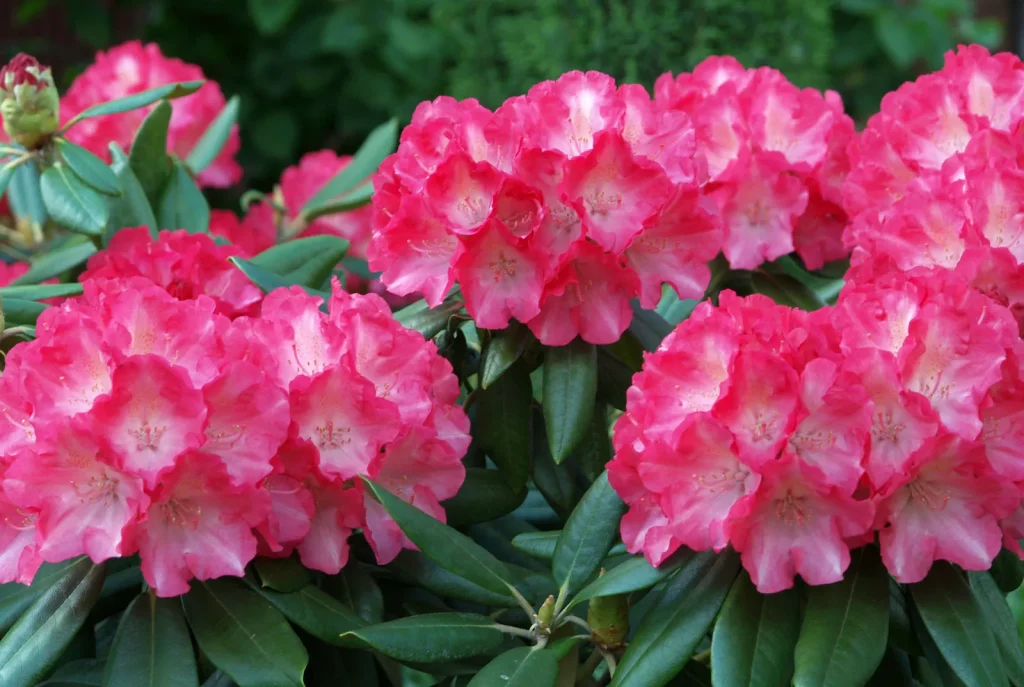
Rhododendrons are small ornamental shrubs that are either evergreen or deciduous and are renowned for their brilliant fragrant flowers and glossy dark green leaves. These blooms are available in an array of shades like white, pink, purple, red and yellow. Considering the species and climate, they typically bloom in the spring or early summer. Both evergreen and deciduous leaf types are typically big and leathery.
22. Apple Blossom
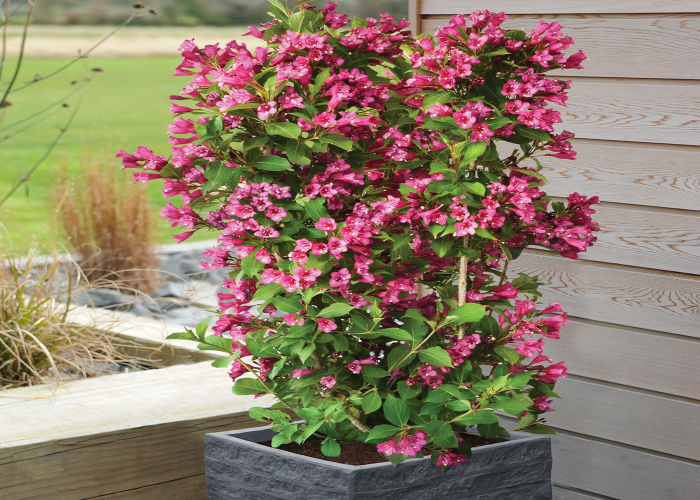
Because of how strikingly it is similar to its namesake, it is known as apple blossom. It thrives in most soil types and is equally content growing in full sun or light shade. If left unchecked, it will become a thorny tangle of branches. It can be shaped into a tidy shrub or used as a wall shrub or hedge if the foliage is cut back after flowering. The bonus point is you can make jelly out of fruit.
23. Japanese Apricot
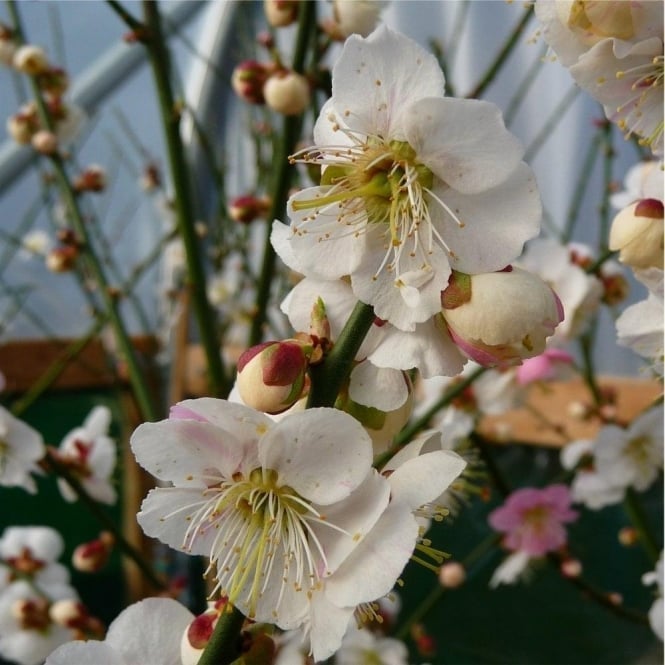
Japanese Apricot, a small tree that blooms from late February through March, is well known for its carmine pink, almond-scented flowers that can cover the branches. It can be planted in containers because it is a compact tree that only grows to a height of 2.5 metres. It prefers full sun and protected location and thrives well in most soil except those which are too wet or chalky. Its fruits are rarely tasty; however, they are occasionally edible.
24. Lilac
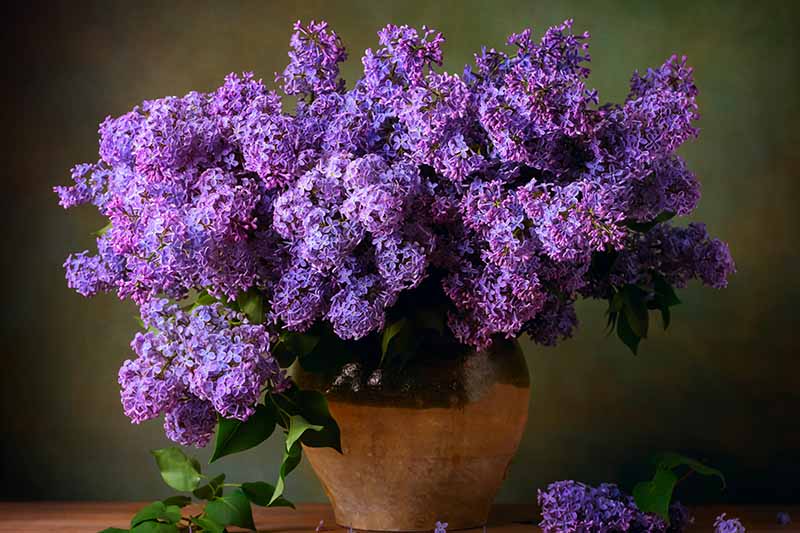
The olive family includes the genus lilac, which includes flowering shrubs and tall trees. Lilacs are well known for their lovely and fragrant blooms, which normally appear in late spring to early summer. These spring flowers are popular garden plants. They have huge conical clusters of flowers in hues of purple, pink or white. Bees, butterflies and other pollinators are drawn to them by their strong fragrance. Its leaves are typically heart-shaped and dark green and also have a pleasant smell when crushed.
25. Violets

Violets are renowned for their delicate fragrant flowers, which bloom in the early spring, usually between March and May, depending on the species and climate. They typically come in hues of purple, blue, pink, or white and have a characteristic form with five unevenly spaced petals. Pollinators like bees and butterflies are drawn to them because of their strong fragrance. Its leaves are heart-shaped too, and depending on the species, they can be either deciduous or evergreen.
Final Words
All in all, these 25 early spring flowering plants covered in this article are a wonderful way to add some beauty and colours to your garden during the season of regeneration and new beginnings, that is, spring. Among these gorgeous blooms, you can find something that suits your needs, whether you are seeking something conventional or more novel. When these spring flowers bloom in warmer months, they will elevate any outdoor space with their vivid shades, alluring scents, and delicate petals.
In addition to im[roving your garden’s aesthetics, these spring flowering plants are a great way to draw in the local wildlife. For birds and other tiny animals, many of these plants offer food or places to build nests.
So what are you waiting for? Grab your gardening gloves and get ready to plant some stunning flowers to brighten up your garden this spring season!

